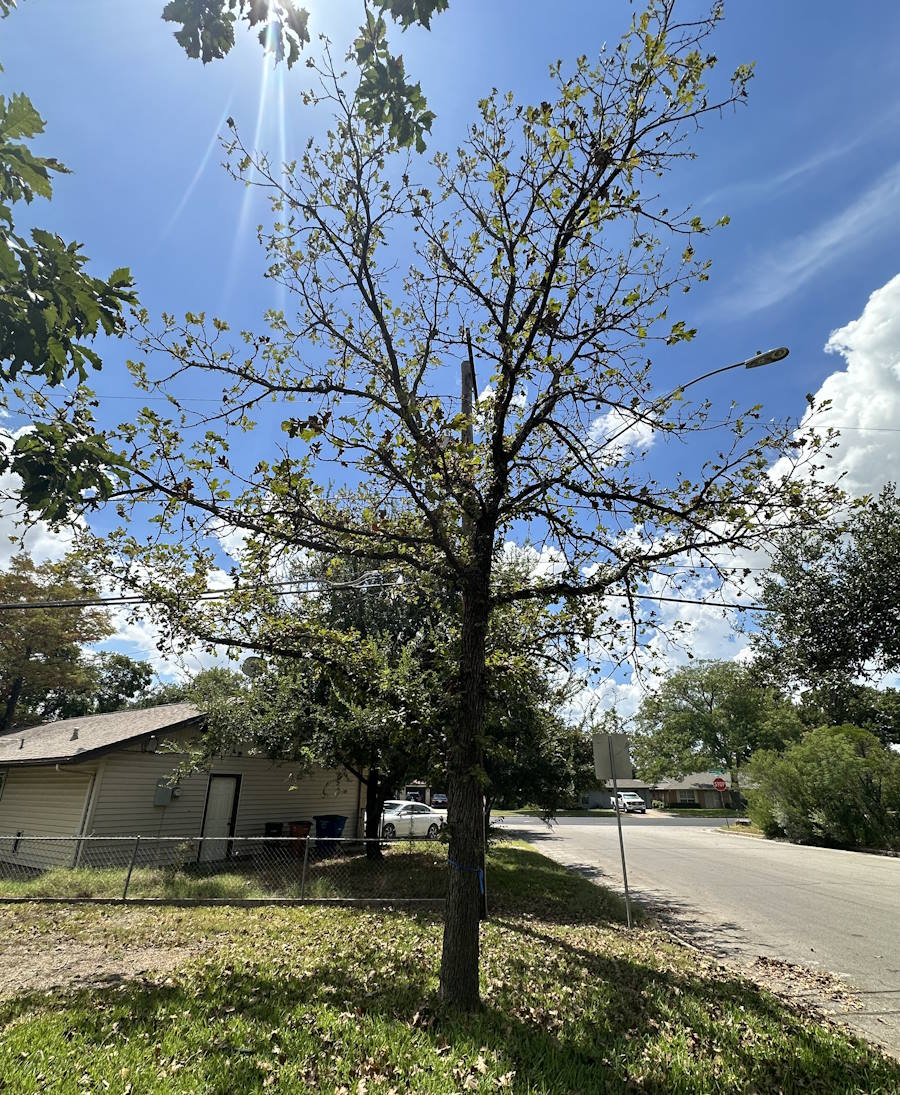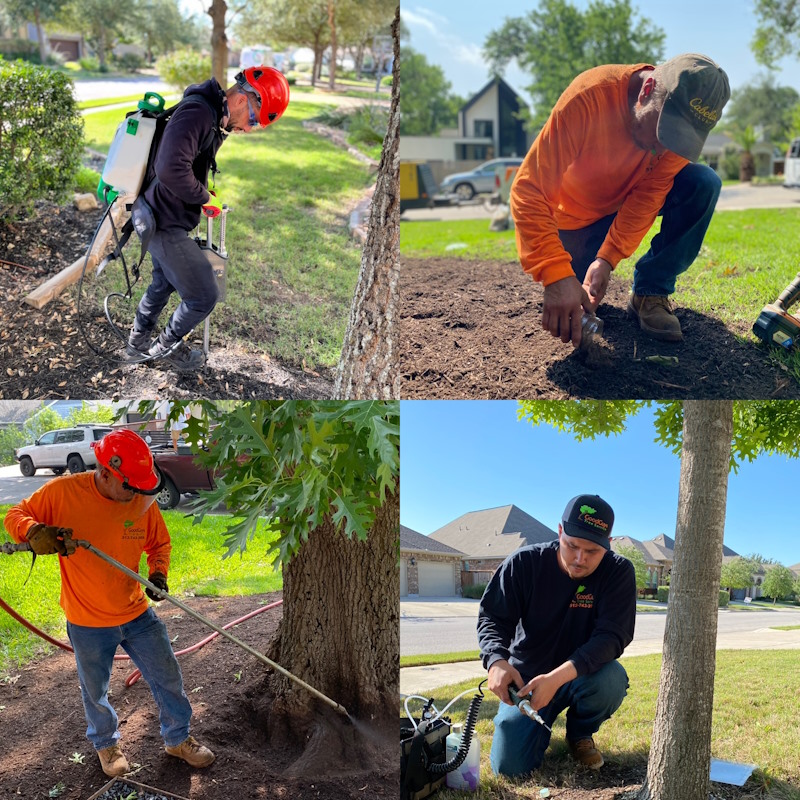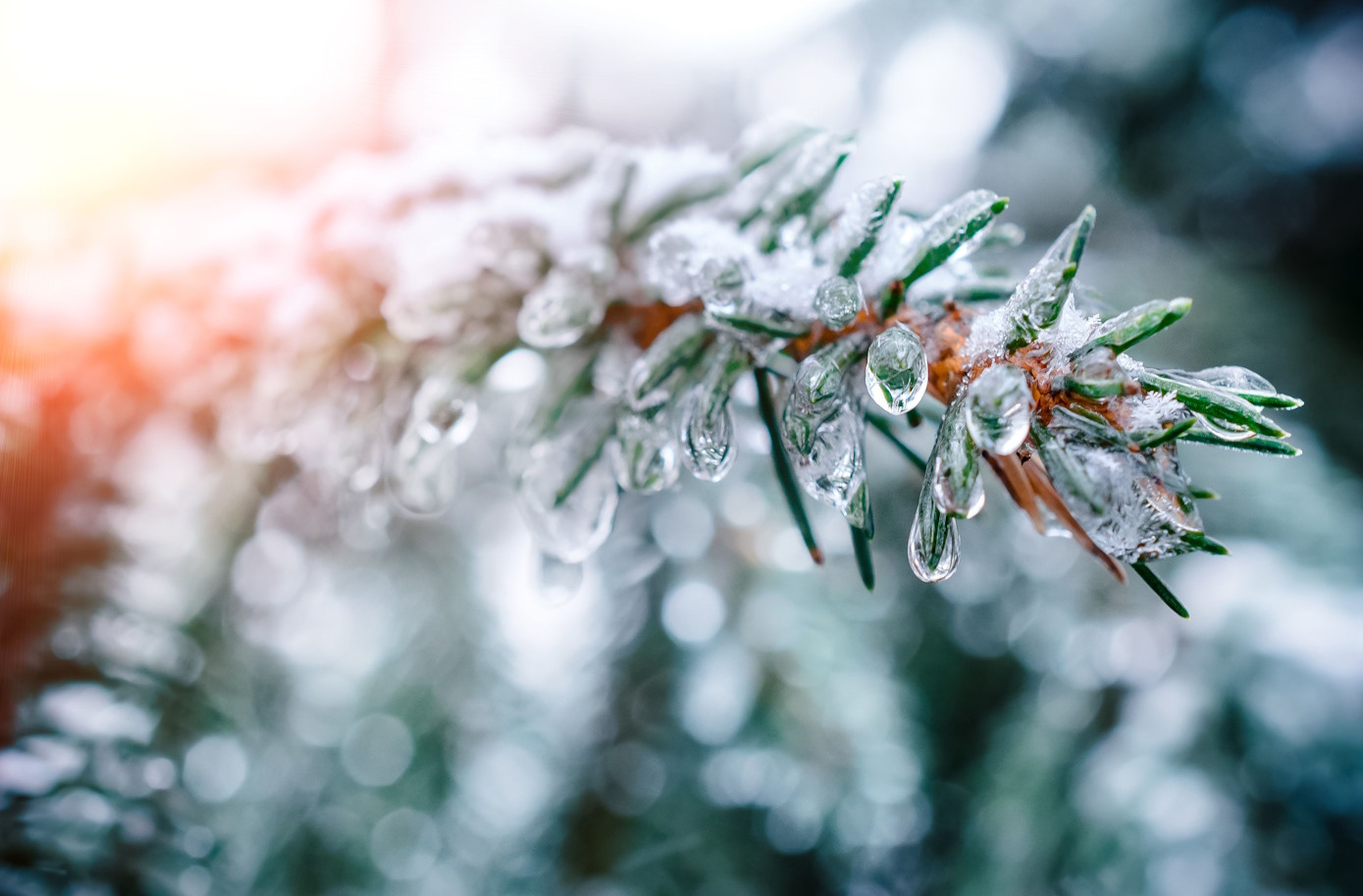As summer reaches its peak, we often associate this time of year with lush, green canopies providing much-needed shade. However, in recent years, an increasing number of trees are shedding their leaves prematurely, a phenomenon that many people typically associate with autumn. This early leaf drop during summer is a direct consequence of prolonged heat stress and drought conditions. We highly recommend giving Good Guys Tree Service a call or sending us an email requesting our Deep Root soil conditioning services right away!
Our advanced Deep Root Fertilization treatment is a game changer for your trees’ health and vitality. This specialized service delivers a unique blend of essential nutrients directly to the root zone, ensuring your trees get exactly what they need to thrive.
Our formula includes a potent mix of nutrients, seaweed extract, humic acid, surfactants, and humectants, designed to nourish your trees from the inside out. The seaweed extract stimulates root growth and enhances overall plant vigor, while humic acid improves nutrient uptake and soil health. Surfactants ensure even distribution of these nutrients, and humectants help retain moisture, and to help keep your trees hydrated even during dry spells.
By opting for our Deep Root Fertilization, you’re investing in the long-term health of your trees, ensuring they remain strong, vibrant, and resistant to stressors like drought and disease. Give your trees the deep-rooted care they deserve!
The Science Behind Summer Leaf Drop
Trees, like all plants, rely on a delicate balance of water and nutrients to maintain their health. During normal conditions, leaves play a crucial role in photosynthesis, the process by which trees convert sunlight into energy. This process also helps in cooling the tree and maintaining its moisture levels.
However, when temperatures soar and rainfall is scarce, trees experience heat stress. The intense heat increases the rate of water loss through a process called transpiration, where water evaporates from the leaves. If the tree is unable to replenish this lost moisture due to a lack of water in the soil, it begins to experience drought stress.
To survive, trees enter a survival mode, prioritizing their core functions over the maintenance of their leaves. This is why some trees will begin to shed their leaves early during periods of extreme heat and drought. By dropping leaves, the tree reduces its surface area, thereby minimizing water loss and conserving whatever moisture it can.
The Impact on the Ecosystem
Premature leaf drop can have significant implications for the ecosystem. Leaves provide habitat and food for various insects and animals. When trees shed their leaves too early, it disrupts these relationships, potentially leading to a decline in certain species that rely on leaves for survival.
Additionally, fallen leaves contribute to the natural recycling of nutrients in the soil. When leaves drop prematurely, they may decompose too quickly or fail to break down fully, disrupting the nutrient cycle and affecting the overall health of the soil.
What Can Be Done?
While we can’t control the weather, there are steps we can take to help trees cope with heat stress and drought conditions:
- Mulching: Applying a layer of mulch around the base of trees helps retain soil moisture and keeps the roots cool.
- Proper Watering: During extended periods of heat and drought, deep watering is essential. Water trees early in the morning or late in the evening to minimize evaporation.
- Choosing Drought-Tolerant Species: When planting new trees, consider species that are more tolerant of heat and drought conditions.
- Pruning Wisely: Avoid heavy pruning during droughts, as this can further stress the tree. Instead, focus on removing only dead or diseased branches.
Looking Ahead
With climate change leading to more frequent and intense heat waves, the phenomenon of summer leaf drop may become more common. Understanding the causes and effects of heat stress and drought on trees is the first step toward mitigating its impact. By taking proactive measures, we can help our urban forests and natural landscapes survive and thrive, even in the face of challenging conditions.
As we enjoy the long days of summer, let’s also keep an eye on the health of the trees around us. They are, after all, a vital part of our environment, providing shade, beauty, and a host of ecological benefits. By understanding and addressing the challenges they face, we can ensure that they continue to stand tall for generations to come.








